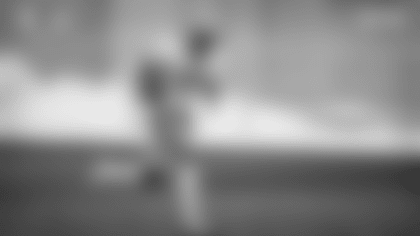Boston has its Freedom Trail, and now Green Bay is going to have a Packers Heritage Trail.
Patterned after the popular Boston attraction that pinpoints key historical landmarks from the American Revolutionary period, the Packers Heritage Trail will highlight buildings and other locations throughout downtown Green Bay that played a role in the first 50 years of Packers history (1919-68).
Called "a walk through Packers history from Lambeau to Lombardi," the Packers Heritage Trail is the brainchild of longtime Wisconsin sportswriter and Packers historian Cliff Christl (pictured), who covered the Packers as a beat reporter for the Green Bay Press-Gazette, Milwaukee Journal and Milwaukee Journal Sentinel for more than 30 years, beginning in the early 1970s.
Christl announced detailed plans for the project on Tuesday morning at the Neville Public Museum, which will serve as the trailhead for the walking tour. Christl and his wife, Shirley, have spearheaded the project since presenting the idea to local business and community leaders 2½ years ago.
"A hundred years from now, if there's still an NFL, no matter how many teams there are, the one thing that's going to separate the Green Bay Packers from every team in that league is those 50 years," said Christl, a Green Bay native.
The trail will feature 17 bronze plaques, all within a mile of downtown Green Bay, that will describe the significance of each landmark. Some of those will include the old Press-Gazette building, where the team was founded; the Hotel Northland, where Vince Lombardi held his introductory press conference in 1959 and where all visiting teams stayed until the 1970s; the Northern Building, where Curly Lambeau held an office for nearly 20 years while he was simultaneously coaching the Packers and working as a district manager for the Massachusetts Mutual Life Insurance Company; and the Elks Club, where Lombardi was presented with the first of five league championship trophies by Commissioner Pete Rozelle in April, 1962, and where the first Packers Hall of Fame induction ceremony was held in 1970.
The self-guided walking tour will cover roughly 4½ miles. Two additional trails will add five more plaques and be presented as extended bike rides from the downtown trail – a "Packing Plant" spur that will feature the former Indian and Acme packing plants, the team's first two sponsors, and a "Lambeau-Lombardi" spur that will include St. Norbert College in De Pere, the team's training camp home since 1958. The "Lambeau-Lombardi" spur also will include stops, without plaques, at Lambeau's gravesite and the Lombardi family home.
"There isn't an organization in the NFL that has more history and tradition than the Packers, and obviously we celebrate that with Lambeau Field and our Hall of Fame there, but this really adds something," Packers President/CEO Mark Murphy said at Tuesday's announcement. "We're really excited about it. For our active fans who want to have an interactive tour and really get to know the history of the Packers, this is going to be very popular."
The Packers Heritage Trail (packersheritagetrail.com) is being funded solely through private donations and sponsorships. Christl, who said he began to get serious about his idea when he wrote a piece entitled "A Downtown Walk with the Packers" for the 2009 Packers Yearbook, also emphasized that cooperation from local businesses and property owners at the various trail stops has been invaluable.
All the plaques are scheduled to be installed by June 15. Each will weigh 150 pounds, will be either mounted on a pole or attached to a building, and will include a roughly 225-word vignette about the location's significance.
"I understand some baseball franchises have even longer histories, but are there any, other than maybe the Yankees, that are more special than this? That this team survived against the odds that it faced in this city?" Christl said. "There were only 30,000 people here when this team started.
"That's why we focused on the Lambeau-to-Lombardi theme, because I don't want this to become outdated, and this way I don't think it will ever become outdated."
Boston's Freedom Trail certainly hasn't. Established in 1958, coincidentally one year after Lambeau Field was built, the Freedom Trail still sees more than 3 million visitors annually.
"This Heritage Trail will do for the city of Green Bay what the Freedom Trail has done for Boston," Murphy said. "People love it, and this is really going to strengthen the tie between the Packers, Lambeau Field and downtown Green Bay."















